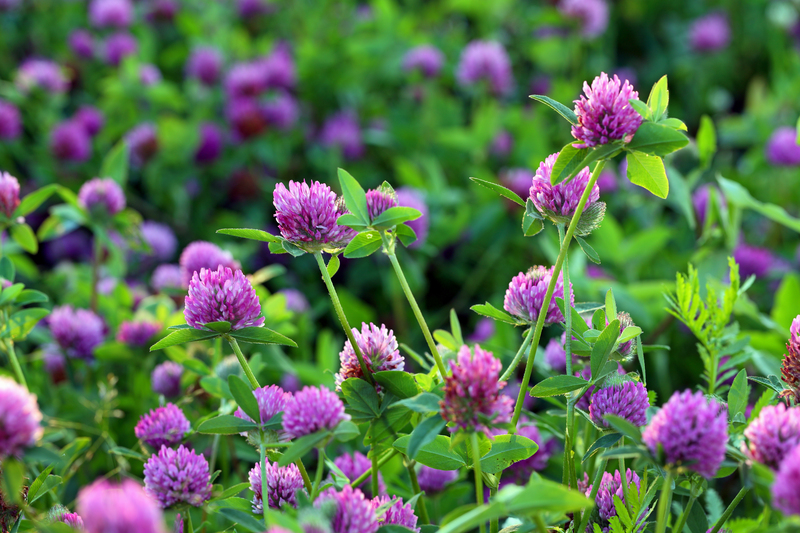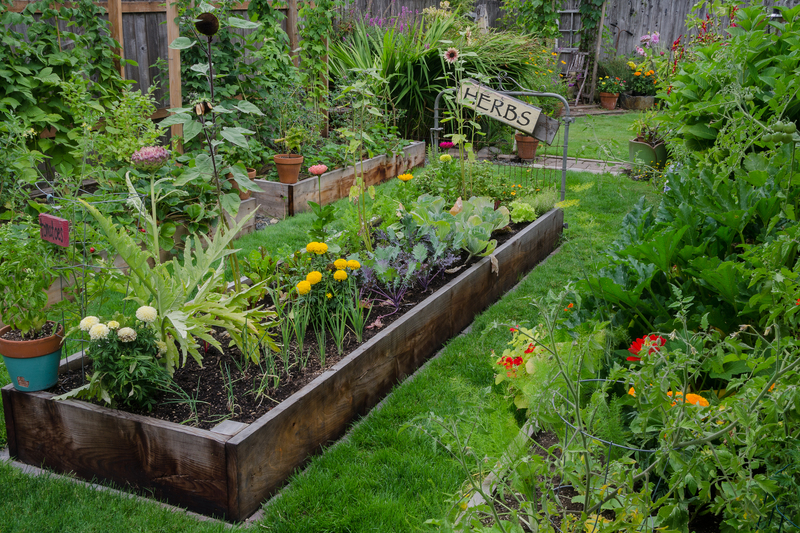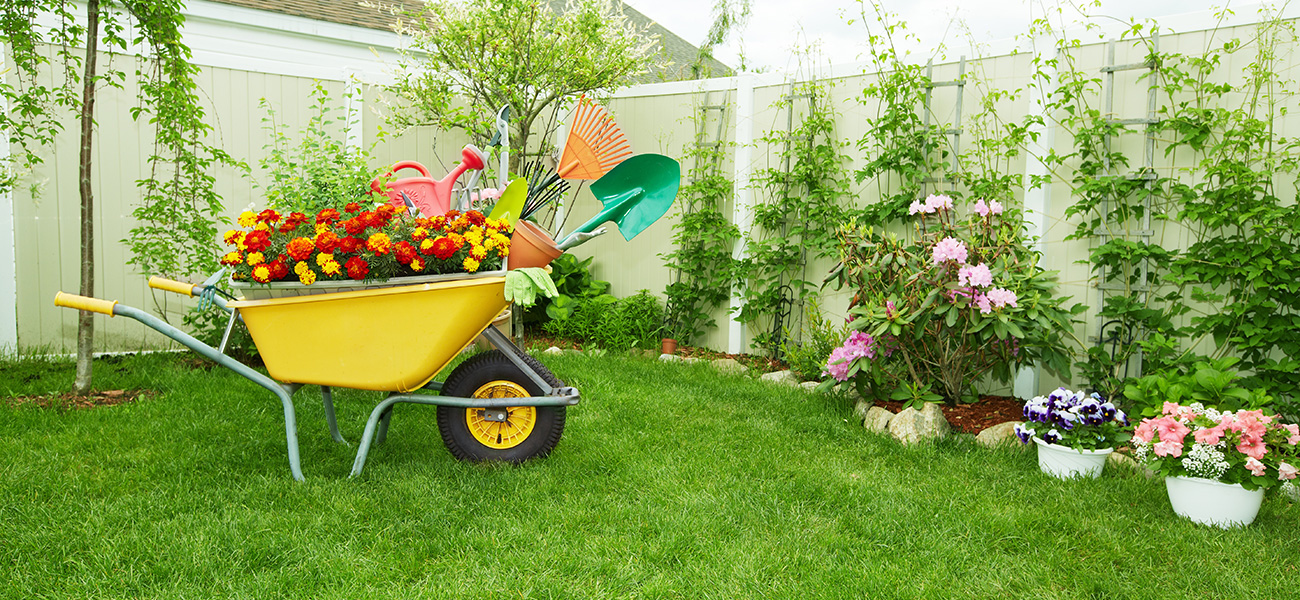Gardening: A Growing Solution to Climate Change
Posted on 29/08/2025
Gardening: A Growing Solution to Climate Change
Introduction
Climate change is recognized as one of the most pressing challenges of our times. Increasing carbon emissions, loss of biodiversity, and rising global temperatures threaten ecosystems and human societies alike. As the world seeks viable solutions, gardening is emerging as a promising, grassroots response to these environmental crises. In this comprehensive article, we'll explore how gardening and climate change are intimately connected and how gardening can be a powerful tool for creating a healthier planet.

Understanding the Impact of Climate Change
Climate change is driven by factors such as deforestation, industrialization, and increased fossil fuel consumption. Its effects are far-reaching, including:
- Global warming: Temperatures are rising, leading to more frequent heatwaves and droughts.
- Loss of biodiversity: Habitats are disappearing, and species are becoming extinct at an alarming rate.
- Extreme weather events: Floods, hurricanes, and wildfires are becoming more common.
- Soil degradation: Unsustainable practices deplete soil health, reducing productivity.
- Food insecurity: Crop yields are affected by erratic weather and poor soil health.
How Gardening Helps Combat Climate Change
Gardening, especially when done with sustainability in mind, is more than a hobby. It's a climate action that offers multiple environmental benefits:
- Carbon Sequestration: Plants absorb carbon dioxide (CO2), the primary greenhouse gas, and store it in their tissues and the soil. Gardens, both big and small, can serve as carbon sinks.
- Biodiversity Restoration: Gardeners who cultivate native plants and diverse species support pollinators, birds, and beneficial insects, helping restore the balance of nature.
- Improved Soil Health: Practices like composting and mulching enhance soil fertility and structure, making it more resilient to climate variations.
- Reduced Urban Heat: Gardens and green spaces help cool cities by providing shade and releasing moisture through transpiration.
- Supporting Local Food Systems: Growing your own fruits and vegetables lowers dependence on long supply chains, reducing fossil fuel use for transportation and packaging.
In short, gardening for the planet is not only possible, it's increasingly necessary.
1. Carbon Sequestration and Air Quality
Trees, shrubs, and even groundcover plants capture CO2 through photosynthesis, helping to mitigate greenhouse warming. In urban environments, home gardens can make a tangible difference:
- Trees and large shrubs store substantial amounts of carbon in branches, roots, and trunks.
- Soil stores organic matter created by plant roots and decomposing leaves, further trapping carbon.
- Cover crops and mulches add to organic matter, keeping carbon in the ground rather than releasing it into the atmosphere.
According to environmental scientists, a mature tree can sequester approximately 22 kg of CO2 per year -- an amount equivalent to what your car produces during a short commute! Imagine multiplying this effect across neighborhoods and cities.
2. Biodiversity Enrichment through Gardening
Gardeners who choose diverse, native, and pollinator-friendly plants contribute significantly to local ecosystem resilience. Here are some ways gardening promotes biodiversity and aids climate adaptation:
- Planting native species provides food and habitat for insects, birds, bees, and butterflies.
- Diverse gardens maintain genetic variety, which is crucial for adaptation to changing climates.
- Perennial plants stabilize soil and reduce runoff during heavy rains, combating erosion and flooding.
Biodiverse gardens also tend to be more resilient to pests and diseases, reducing the need for chemical interventions that can further damage the environment.
3. Water Conservation and Management
Water scarcity is an increasing challenge in many counties. Sustainable gardening practices, such as xeriscaping, rainwater harvesting, and mulching, can play a big role in addressing water issues:
- Xeriscaping involves using drought-resistant plants that require minimal watering.
- Mulching reduces evaporation and keeps soil moist for longer periods.
- Rain gardens capture and absorb stormwater, reducing runoff and pollution.
- Composting increases soil's water retention abilities, helping gardens thrive even in dry periods.
Gardening and climate action go hand in hand when water resources are managed wisely.
4. Local Food Production and Reduced Emissions
The global food system contributes a large share of greenhouse gas emissions due to transportation, refrigeration, and packaging. By growing food at home or in community gardens, people can substantially cut their carbon footprint.
- Homegrown produce doesn't require shipping, reducing fossil fuel consumption.
- Food waste can be composted, returning nutrients to the soil and cutting methane emissions from landfills.
- Organic gardening methods eliminate synthetic fertilizers and pesticides, which are energy-intensive to produce.
Even small edible gardens can make a measurable impact on both family health and the environment.
Steps to Creating a Climate-Friendly Garden
Anyone can contribute to sustainable gardening for climate change by following some practical, science-backed practices. Here's how to get started:
- Choose Native Plants: Native flora are adapted to local conditions, requiring less water and being more resilient to pests and disease.
- Incorporate Perennial Species: Unlike annuals, perennials don't need to be replanted every year, which saves energy and keeps carbon in the soil.
- Build Healthy Soils: Add compost, avoid tilling, and use mulch to foster a rich, living soil ecosystem.
- Plant Trees and Shrubs: Increasing tree cover offers long-term carbon storage and habitat benefits.
- Practice Organic Methods: Avoid synthetic chemicals, rotate crops, and plant a variety of species for natural pest control.
- Save Water: Collect rainwater and use efficient irrigation systems.
- Support Wildlife: Create pollinator gardens and leave some wild areas for beneficial insects and animals.
Embracing Composting and Mulching
A key strategy for climate-resilient gardening is to improve the soil using compost and mulch. This not only boosts fertility but also helps gardens regulate moisture and temperature:
- Composting transforms kitchen scraps and yard waste into nutrient-rich soil, reducing landfill emissions.
- Mulching insulates roots, conserves water, and prevents weeds -- all while gradually enriching the soil as it breaks down.
Urban Gardening: Greening the Concrete Jungle
Urban areas are especially vulnerable to climate effects, such as heat islands and air pollution. Urban gardening -- from rooftop plots to balcony containers -- is a practical response:
- Community gardens transform vacant lots into productive green space, fostering social engagement and food security.
- Vertical gardens and planters add greenery where ground space is limited, improving air quality and insulation for buildings.
- Green roofs reduce city temperatures and stormwater runoff, supporting wildlife even in dense urban centers.
Overcoming Challenges in Climate-Conscious Gardening
While the benefits of climate-smart gardening are clear, there are challenges to consider, such as extreme weather, soil degradation, and resource constraints. Here's how to overcome them:
- Adapt plant choices: Select species tolerant of drought, flooding, or temperature extremes.
- Diversify plantings: Reduces risk from pests and diseases while providing a wider range of ecosystem services.
- Invest in soil health: Healthy soil absorbs more water during storms and retains nutrients better during dry spells.
- Engage the community: Shared learning, resources, and labor can help overcome barriers to effective climate-action gardening.
The Role of Community Gardens in Climate Action
Community gardens are a shining example of collective action for the climate. They:
- Maximize urban green spaces, improving air quality and community well-being.
- Provide local, fresh food, reducing the need for long-distance transportation.
- Serve as educational centers, teaching sustainable practices to people of all ages.
- Foster social bonds, encouraging collaboration and knowledge-sharing on resilience strategies.
Gardening's Psychological and Social Benefits in a Changing Climate
In addition to its environmental impact, gardening for climate resilience offers profound mental health and community benefits:
- Reduces stress through contact with nature and the satisfaction of nurturing life.
- Encourages outdoor activity, promoting healthier lifestyles.
- Builds a sense of community as people work together to solve shared challenges.
- Empowers individuals -- taking tangible action against climate change counters feelings of helplessness and climate anxiety.

Future Directions: Scaling Gardening as a Climate Solution
To fully realize the potential of gardening to fight climate change, it needs to be scaled up at every level -- from individual households to entire cities. Policy, education, and technology all play a part:
- Policy support: Local governments can incentivize green roofs, community gardens, and conservation landscaping.
- Educational programs: Schools and community groups can teach sustainable gardening skills to ensure the next generation is prepared.
- Smart technologies: Tools like drip irrigation, soil sensors, and climate modeling help gardeners adapt and maximize their impact.
- Networking: Sharing best practices across regions helps scale up success stories and overcome local barriers.
Conclusion: Small Actions, Big Impact
Gardening may start with a seed, but it grows into a solution with far-reaching consequences for the health of our climate, communities, and future generations. By embracing gardening as a climate solution, we empower individuals and groups to restore ecosystems, reduce emissions, and build resilience, one garden at a time.
Now is the time to dig in -- for the planet, for ourselves, and for those who will inherit the Earth after us.
Frequently Asked Questions
- How does gardening help reduce greenhouse gases?
Plants capture and store carbon dioxide during growth, helping balance atmospheric carbon and reduce greenhouse warming. - What are the best plants to grow for climate resilience?
Native trees, shrubs, drought-resistant perennials, and pollinator-friendly flowers are ideal for supporting local biodiversity and climate adaptation. - Can urban dwellers make a difference with small balcony gardens?
Yes! Even a few container plants can improve air quality, provide habitat for pollinators, and reduce the heat island effect in cities. - How does composting relate to climate change?
Composting organic waste diverts it from landfills, where it would otherwise produce methane -- a potent greenhouse gas.
Let's make gardening a cornerstone of our climate action toolkit -- transforming our landscapes and our future, one plot at a time.



